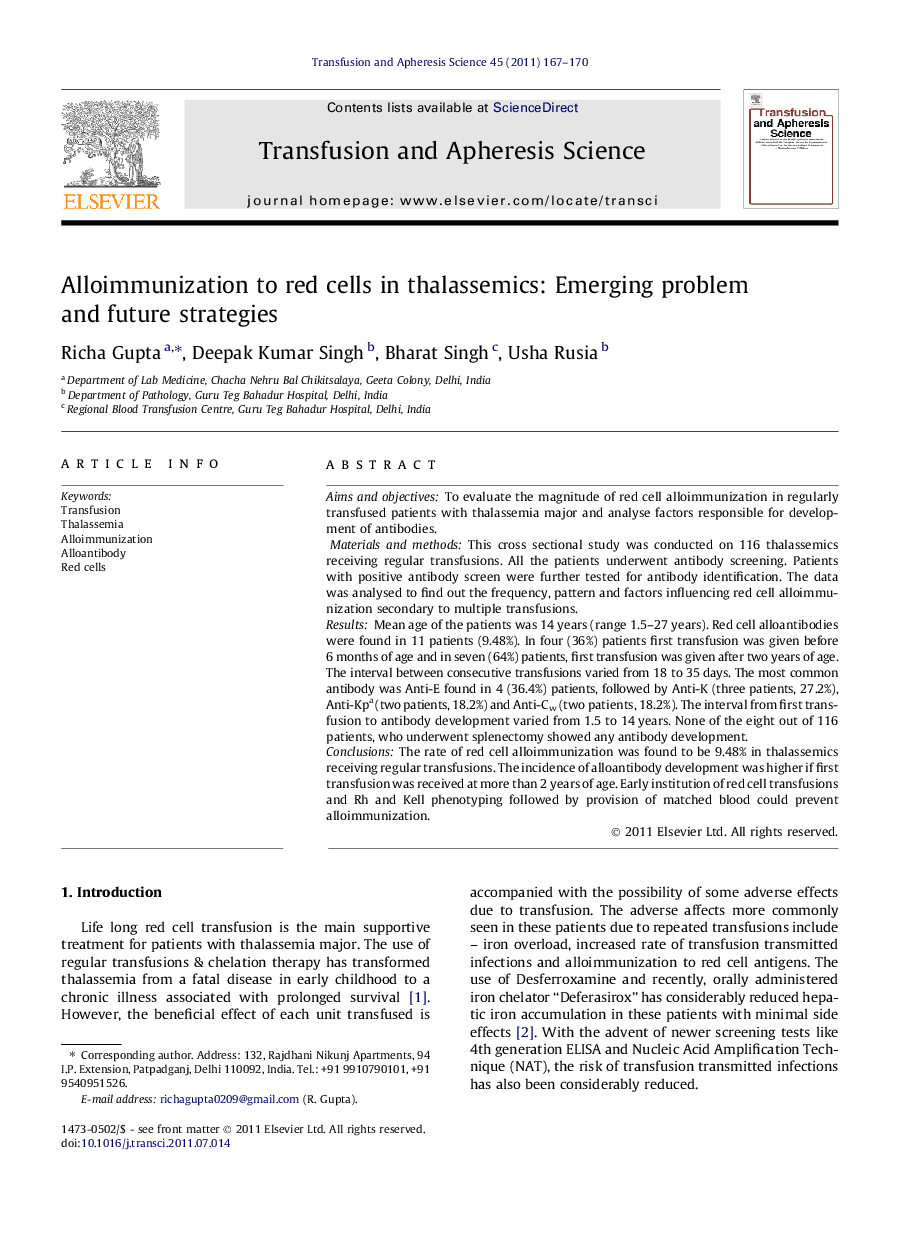| Article ID | Journal | Published Year | Pages | File Type |
|---|---|---|---|---|
| 3335633 | Transfusion and Apheresis Science | 2011 | 4 Pages |
Aims and objectivesTo evaluate the magnitude of red cell alloimmunization in regularly transfused patients with thalassemia major and analyse factors responsible for development of antibodies.Materials and methodsThis cross sectional study was conducted on 116 thalassemics receiving regular transfusions. All the patients underwent antibody screening. Patients with positive antibody screen were further tested for antibody identification. The data was analysed to find out the frequency, pattern and factors influencing red cell alloimmunization secondary to multiple transfusions.ResultsMean age of the patients was 14 years (range 1.5–27 years). Red cell alloantibodies were found in 11 patients (9.48%). In four (36%) patients first transfusion was given before 6 months of age and in seven (64%) patients, first transfusion was given after two years of age. The interval between consecutive transfusions varied from 18 to 35 days. The most common antibody was Anti-E found in 4 (36.4%) patients, followed by Anti-K (three patients, 27.2%), Anti-Kpa (two patients, 18.2%) and Anti-Cw (two patients, 18.2%). The interval from first transfusion to antibody development varied from 1.5 to 14 years. None of the eight out of 116 patients, who underwent splenectomy showed any antibody development.ConclusionsThe rate of red cell alloimmunization was found to be 9.48% in thalassemics receiving regular transfusions. The incidence of alloantibody development was higher if first transfusion was received at more than 2 years of age. Early institution of red cell transfusions and Rh and Kell phenotyping followed by provision of matched blood could prevent alloimmunization.
